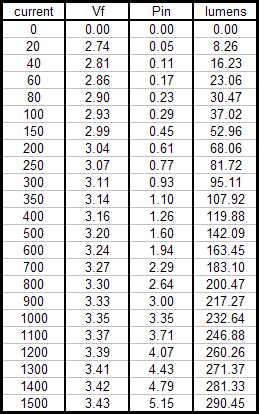I changed my setup somewhat immediately before the tests of the Rebel 100 and the Hebei LEDs. I set up a series of baffles and totally enclosed them to block out any ambient light:
I even put a removeable cover to block ambient light near the light meter:
The purpose of these modifications was to eliminate guestimating the background light which needed to be subtracted from the light meter reading. For 5mm LEDs this was at most about 0.5 lux, but for power LEDs it was considerably more. Prior to this, I would block out the direct portion of the beam with a piece of cardboard, note the reading, then subtract it from the unblocked reading. This method always bothered me because it introduced another variable. While the background reading was fairly steady, it did vary enough depending upon the placement of the cardboard to cause concern. Hence my use of the term guestimating at the start of this paragraph. The modified setup introduces consistency. When I block off the small hole where light enters from the LED, the reading is at most 0.1 lux, even in a undarkened room. I still do my testing in a darkened room, but with the new setup I don't have to!
Now this is all good and well except that when I tested the Rebel 100 I was getting somewhat less than the minimum of 100 lumens (96.7 lumens @ 350 mA to be exact). However, according to the results of the CPF light meter testing which I had participated in my light meter was reading low for white LED light. The correction factor was 1.116. I applied the correction factor to my Rebel 100 results in post #127 and the numbers are more in line with what I should have gotten.
The only question remaining was whether or not I could reliably compare my earlier results with my new ones. To answer this question I decided to retest the P4 bin Cree XR-E which I had tested last November. The original results were 85.67 lumens at 350 mA. The
uncorrected results using the modified tester were 80.24 lumens at the same 350 mA. This was about 6.4% low. The corrected result was 89.55 lumens, within 4.5% of my original results. I also ended up with a somewhat narrower beam angle (new results in red, old in blue):

It seems then that although I did not apply any correction factors to my earlier results the inherent methodology resulted in slightly wider beam angles which more or less compensated for the lower absolute lux readings. Remember that all of my earlier power LED test results pretty much fell within the ballpark of where they were supposed to for a given bin. The only problem is that LEDs obviously come in different tints, and I suspect I would need different correction factors depending upon the tint. Based on the fact that my light meter was nearly dead-on with incandescent light, the correction factor would increase with increasing color temperature. However, since guestimating correction factors would make this testing more art than science, I'll stick to using the official correction factor of 1.116. The fact that my corrected result for the P4 Cree is a little high probably has to do with that LED being a warmer (WH) tint bin.











